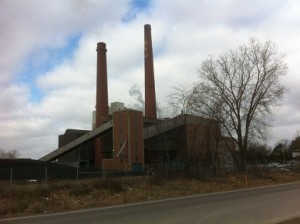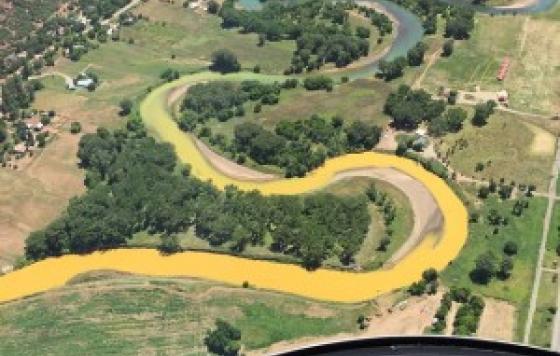
By Tom Taylor, 2013 Energy Program Intern
Coal ash is a byproduct of burning coal. It contains toxic chemicals like arsenic, lead, and mercury. One local producer of toxic coal ash is Michigan State University’s T.B. Simon coal plant, the largest on-campus coal plant in the nation, which burns 200,000 tons of coal each year. Coal ash pollution can contaminate drinking water and cause a number of health problems, including cancer.
Several years ago MSU built what was called the “Bridge to the Future” on the south side of campus. The bridge is a railway overpass designed to allow uninterrupted flow of traffic on the road below. With MSU’s environmentally friendly reputation, I was shocked to hear that a large amount of coal ash was unearthed during the bridge’s construction. The uncovered coal ash had previously been used as fill for construction purposes. Nearly half of the coal ash found during the project was relocated to another contaminated area on campus, known as a Brownfield site. In the light of all the negative consequences of coal ash pollution I’m surprised that the Michigan State Administration would elect to keep the coal ash on campus. Allowing coal ash to be stored close to a large population of students is not a thoughtful decision. In addition to human health concerns, plants and wildlife can be impacted by the toxic chemicals contained in coal ash as well. In order to protect the health of students and our environment we must properly dispose of this toxic substance.
The remaining unearthed coal ash that was not moved to the Brownfield site was properly disposed of in a landfill. If half the coal ash was safely moved to a landfill, why not move all of the ash to a safe area off campus? Michigan State should protect its students from this harmful substance. Moreover, MSU must move our campus away from the use of coal in general.
The story of Town of Pines, Indiana, serves as a cautionary tale for all those who haven’t experienced the potentially devastating side-effects of coal ash. In this small town near the coast of Lake Michigan, over a million tons of coal ash was disposed of in a local landfill and used as construction fill over a 19 year period. The landfill is located near a shallow aquifer that provides the town with drinking water. After complaints about the water quality, the groundwater was tested and found to contain high levels of toxic metals. The extent of the contamination was so severe that Town of Pines was declared a Superfund site. This designation is given by the EPA to areas requiring extensive clean-up of hazardous waste. Town of Pines was supplied with bottled water by the EPA after filters didn’t work to remove the contaminants in the drinking water. Coal ash pollution has caused the town’s water to become undrinkable. You can learn more about what happened in Town of Pines here.
Even though our University has yet to feel the major side-effects of coal ash, it is important that we learn a lesson from Town of Pines. A toxic substance like coal ash shouldn’t be loosely contained or placed in our backyard. So, next time a debate about clean energy comes up, it is imperative that we consider the long term, irreversible side-effects coal plants have on our health and our environment.
Learn more about the dangers of coal ash here.
Don’t forget to check us out on Facebook and Twitter to learn more about what we’re doing to protect Michigan’s environment!
The referenced media source is missing and needs to be re-embedded.
MSU T.B. Simon Power Plant -Photo Credit Tom Taylor
The referenced media source is missing and needs to be re-embedded.
MSU’s “Bridge to the Future - Photo Credit Tom TaylorRelated Posts
Stay Informed
Get the latest updates and actions:
Thanks for signing up!
There was a problem processing your signup. Please try again.


